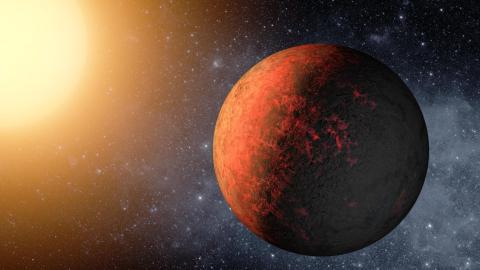A planet is an object which orbits a star.
Planets must have three things to be classed as planets and these are:
- Be spherical in shape, rounded by its own gravity.
- Be small enough not to becomes stars (by carrying out nuclear fusion).
- Have cleared its local area of other objects, such as asteroids.
Objects which are too small to have done these things are called dwarf planets instead.
Image

Credit
This work
by NASA/Ames/JPL-Caltech
is licensed under Creative Commons Zero v1.0 Universal
Planets divide into 2 main groups: terrestrial planets and giant planets. Terrestrial planets have a solid surface, like the Earth. Giant planets are made of layers of gas, or ice, with small rocky cores.
The terrestrial planets in our Solar System are:
The giant planets in our Solar System are:
Planets which orbit other stars (i.e. NOT the Sun) are called exoplanets.
| Facts and Figures | Mercury | Venus | Earth | Mars | Jupiter | Saturn | Uranus | Neptune |
|---|---|---|---|---|---|---|---|---|
| a 1 AU (or Astronomical Unit) = 149,600,000 km and is the mean distance from the Earth to the Sun b 1 Earth Mass = 5,980,000,000,000,000,000,000,000 kg c 1 g = 9.8 m/s2 - this is the acceleration due to gravity on Earth d All values are sidereal days (time taken to rotate once) except for Mercury and Venus which are solar days (time from midnight to midnight). | ||||||||
| Orbital distance (AU) a | 0.38 | 0.72 | 1.00 | 1.52 | 5.20 | 9.54 | 19.20 | 30.06 |
| Radius (km) | 2,440 | 6,054 | 6,378 | 3,397 | 71,492 | 60,268 | 25,559 | 24,746 |
| Mass (Earth Masses) b | 0.055 | 0.82 | 1.00 | 0.11 | 318 | 95.2 | 14.5 | 17.1 |
| Year Length (Earth days) | 88 | 225 | 365.25 | 687 | 11.9 years | 29.45 years | 84.0 years | 164.8 years |
| Day Length (Earth Days)d | 176 | 117 | 1.0 | 1.03 | 0.41 | 0.43 | 0.75 | 0.67 |
| Surface Gravity (g) c | 0.38 | 0.91 | 1.0 | 0.38 | 2.34 | 0.93 | 0.92 | 1.12 |
| Surface Temperature (approx.) | -200 to 400°C | 460°C | -80 to 50°C | -150 to 20°C | -110°C | -140°C | -190°C | -200°C |
| Number of Moons | 0 | 0 | 1 | 2 | 90+ | 140+ | 27 | 14 |
